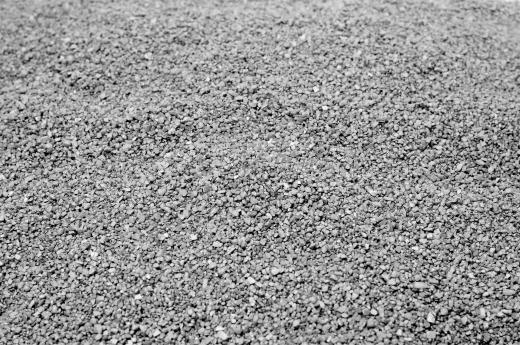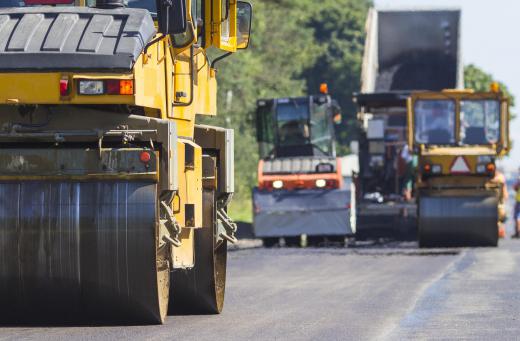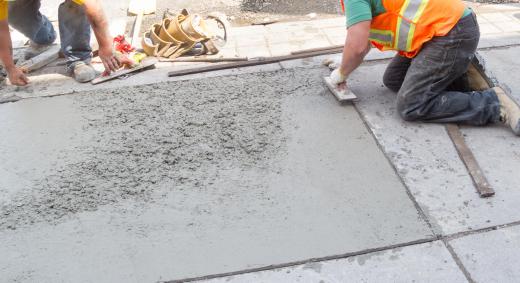A base material is a gravel-based substance used to support a paved surface. Contractors install the base material between the soil and a new roadway, driveway, parking lot, or sidewalk. Base materials not only help paving crews create smoother and more stable roadways, but also act as a layer of insulation to reduce the effects of frost and freezing temperatures. While base material can vary by application, most include some form of aggregate combined with a binding agent, such as asphalt or tar. Many modern blends also include environmentally-friendly components such as recycled concrete, shredded tires, or other sustainable products.
This type of base construction can be found under many different types of paved surfaces. It's used beneath asphalt roads or parking lots as well as concrete patios and walkways. Many homeowners also add a layer of base material beneath a paver-based patio or pool deck. Some very small or temporary paved surfaces may not require a layer of base material.

A well-built roadway base offers a number of advantages over unsupported road surfaces. The base material protects the soil from damage due to construction or heavy traffic. It also minimizes damage on the surface of the roadway by reducing the risk of cracks, spalling, and other signs of deterioration. A paving base also provides structural support to the surface above, and helps spread heavy loads over a larger area. Many material bases can even prevent paving damage caused by small ground shifts and seismic activity.

The total depth and composition of the material base depends on factors like soil conditions, total loads to be supported, and even the weather. Installers start by excavating the soil to make room for the base, then compacting the soil using a large compacting machine. Next, the base materials are applied to the soil and compacted once again before paving can take place. Some projects also require a moisture or vapor barrier above or below the base to reduce the risk of water damage.

Depending on the application, builders may use loose-fill base material like rocks and gravel to support a paved surface. In other cases, the aggregate must be mixed with a binder to improve stability, strength, and longevity. Most of these binding agents are derived from crude oil, though some experiments have been performed using crude oil sludge and industrial by-products in place of virgin materials. Installers must use care when adding these binding agents as they could contribute to soil and water pollution in some areas.
